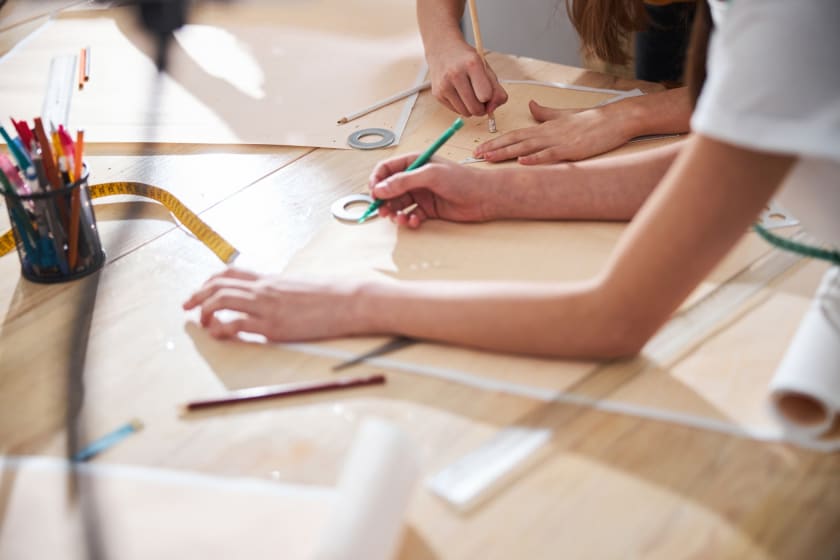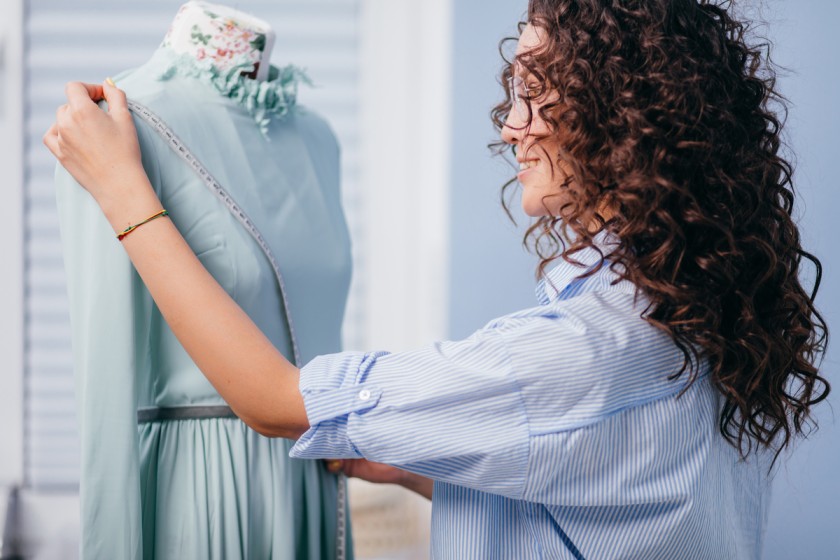The Dilemma of a Pattern Maker



Sewing enthusiasts may run across difficult instructions in most ready-made patterns, which may be really perplexing. Worse, they may have completed a sewing project only to learn that the finished product does not meet their specifications! One of the finest strategies to avert this dilemma is to search out the best pattern making books and learn to draft patterns!
Step-by-step instructions for drawing bespoke sewing patterns may be found in the greatest pattern making books. Several sample designs and custom measuring instructions are frequently included in pattern-making guides for learning. To assist designers in creating distinctive outfits, the most extensive guidelines also offer aesthetic principles and fashion design techniques.
Before diving into the details of the top pattern making books, here are some basic descriptions of pattern making in the world of fashion -
What is pattern making?
Making patterns is a skill. It is the technique of manipulating and molding a flat piece of cloth to fit one or more human body contours. Pattern creation serves as a link between design and manufacturing. A pattern, which translates the design is the creation of garment components, which may convert a drawing into a garment.
What are the methods of pattern-making?

There are three chief methods of pattern making - Drafting, Draping and flat paper pattern making.
- Drafting - It entails measurements taken on a person, clothing, or body form using sizing methods. To finish the design, measurements for the waist, chest, hips and other areas are recorded on paper, along with ease allowances and construction lines. Drafting is a technique for creating fundamental, foundational, or design patterns.
- Draping - A three-dimensional fabric pattern is created by draping a double piece of cloth over a form and adhering to its shape. This muslin is copied onto paper and used as a final design. To make the clothing more pleasant to wear, mobility allowances have been introduced. Draping has the advantage of allowing the designer to examine the overall design impact of the final outfit on the body form before cutting and sewing the garment component.
- Flat paper pattern making - It entails creating a fitting fundamental pattern that is comfortable and easy to fit a person or body type. For flat pattern creation, a sloper is the starting point. It's a straightforward design that fits the figure with just the right amount of wiggle room for mobility and comfort. Simply defined, this approach entails collecting exact measurements from a body or dress form and then transferring them to paper as a pattern. This enables the designer to make several patterns out of a single pattern.
How has the pattern making process been modified with today’s advanced techniques?
With the use of technology, pattern creation has become a simple task. To satisfy the demands of producers, many software is now accessible on the market. Gerber, Tukatech, Lectra, OptiTex, and other software were used. The Pattern Master's job has been made easier by this software. They've made the pattern-making process more cost-effective and time-consuming. The finest pattern creation software provides users digital tools for producing patterns based on their own measurements.
How can a pattern making book help develop a designer's skills?

Good quality pattern making books describe how patterns operate and how to apply specific dimensions to designs. They explain how to adapt two-dimensional designs using unique tools. They generally include sample projects so that the designer may learn how to develop patterns stepwise. Pattern drafting is covered in the books mentioned below. In the books given, there is also an explanation of the draping procedure. Both processes result in one-of-a-kind clothing! One of the most significant benefits of using a pattern making book is that the designer may refer to it on a frequent basis. The titles on this list include useful resources such as measuring advice and conversion tables. They could be useful even after the designers have mastered the fundamentals of the trade.
Here is the finest collection of pattern making books that provide the perfect solution for every dilemma of a pattern maker!
- Saara Huhta and Laura Huhta’s Breaking the Pattern: A Modern Way to Sew - Breaking the Pattern includes ten pieces in the Scandinavian style. Each project comes with a full-size pattern and step-by-step instructions. Working through each project will teach the reader a variety of useful sewing techniques. However, this method will not necessarily teach designers how to draw patterns. Rather, they will gain experience taking measurements and creating a lovely design.
- Winifred Aldrich’s Metric Pattern Cutting - This is one of the most extensive pattern-making book series available; it comprises distinct volumes on Metric Pattern Cutting for Women's Wear, Menswear, Children's Wear, and Baby Wear, each having all the information that a designer ever needs. It is updated on a regular basis, so one must ensure that they get the most recent version.
- Helen Armstrong’s Patternmaking for Fashion Design- 5th ed - The 5th edition of this famous text includes new images and diagrams. This book will teach the readers how to design clothes and create patterns. The approaches used in this project are based on the premise that most fabric manipulation consists of only three principles. Darts, depth, and contouring are the three ideas. Jackets, swimwear, and children's clothing are among the design challenges addressed.
- Sarah Veblen’s The Complete Photo Guide to Perfect Fitting - Beautiful close-up photographs are used to demonstrate pattern design in this enormously popular book. It takes a unique approach to the notion of pattern creation. This document contains the typical instructions on how to use drafting tools and develop patterns for designers. However, the majority of the book concentrates on how to tailor clothing to certain body shapes. Many designers would most likely wish to master pattern creation to fit their clothing to specified measurements. This tutorial contains numerous helpful alterations and adjustments recommendations, as well as directions on how to document such modifications in their designs. The one drawback to this tutorial is that all of the drawings and examples are for women, not men.
- Hilary Campbell’s Designing Patterns – A Fresh Approach to Pattern Cutting - A pattern-making book that is straightforward to grasp and follow. It teaches the reader the fundamentals of pattern building and makes it simple for them to create their own designs. This book covers all of the fundamentals of pattern creation, including garment style and art manipulation. More sophisticated subjects, such as tailored jackets and suits, are also covered.
- Connie Crawford’s Patternmaking Made Easy - This classic work on fashion design has been updated to include beautiful, realistic drawings. The diagrams help comprehend the fundamentals of garment design. This book is mostly targeted at fashion design students. As a result, it is more focused on the fashion sector than other pattern-making manuals. However, it also gives explicit instructions on how to draw. The method of producing a pattern is walked through with clear outlines and beautiful images. This book is an excellent introduction to the world of fashion design for beginners. It's also a fantastic resource for skilled drafters! The author is a designer for McCalls, one of the most well-known brands in the field of prepared sewing patterns. She clearly understands what she's talking about! More significantly, each topic is described in a rational manner that someone who has never been into pattern making before would grasp.
- Jo Barnfield’s The Pattern Making Primer - This short guide covers everything a beginner pattern creator needs to know! Even better, the author aims this book squarely at both home sewers and fashion designers. The principles of costume design, including how to make bodices and sleeves, are covered in this book. The readers will learn how to measure, block out, and draw bespoke patterns as well. Readers may learn what tools they'll need for this procedure as well as how to use them. Each idea or topic is illustrated using easy-to-understand graphics. In addition to discussing how to design bespoke patterns, the book offers suggestions for modifying standard patterns. Designers will be able to correct prior sewing endeavours that went wrong by using key principles like dart and folds to modify the form of a garment. Finally, The Pattern Making Primer discusses the advantages and disadvantages of utilising digital pattern design software.
Pattern making books may teach the readers to create their own bespoke sewing patterns. The books will show them how to collect measurements and draw pattern parts individually. The majority of these publications also demonstrate how to change designs to accommodate different body types. Hence, the dilemma of a pattern maker can be resolved through these books, and the designers can develop expertise in pattern making.
Conclusion -
So finding pattern making books is now easy, and so is finding good manufacturers. Apparel manufacturing is now made smarter and better with Fashinza’s manufacturing platform. Fashinza seamlessly connects the designers with the best-in-class manufacturers in the industry so one can relax while Fashinza handles everything right from designing to delivery. Designers can now produce trendy fashion garments in the most effective, easy and fast way through Fashinza.



















